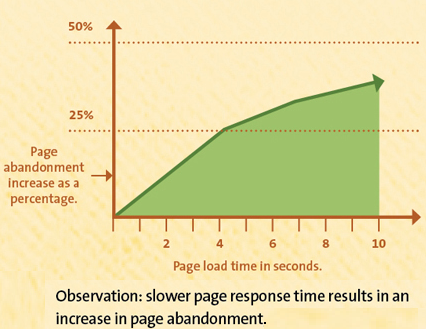-
Traffic
Get More Traffic
SponsoredLinX offers a number of different services to help drive more qualified traffic to your website. Google Ads Management Search Engine Optimisation Microsoft Ads Facebook Advertising Google Ads Mobile“SponsoredLinX are a rarity in today’s market place, they promise a lot but deliver more. Our business has grown by over 400% in one month; we are amazed at the difference they have made.”
-
Conversion
Convert More Leads
Our second step is making sure that your website is able to convert the traffic you receive into leads for your business. Optimising your website to convert more leads is important to a profitable campaign. Web Development Convertopages Do It For Me eCommerce“I just want to say thank you! The changes that you have applied in our AdWords campaign have definitely seen an improvement on click quality and sales for HippityHop.”
-
Retention
Retain Your Customers
As you build up a customer base you need to make sure to keep engaged and retain your relationship. Facebook Management LinX App“SponsoredLinX fully redesigned our main company website with a fresh, clean and professional look. The ‘Google friendly’ web design were part of the fantastic ongoing service we received.”
Improve your website’s Conversion Rate
Your website is, in a sense, your businesses frontline sales consultant, or at least it should be treated that way. Think about this: when you are talking to a sales consultant, what two things must be true for you to purchase off of them?
1. You trust this sales consultant. The consultant is honest, has no agenda and genuinely has your best interests at heart.
2. You like this sales consultant and he/she doesn’t frustrate you. You get along with the consultant on a personal level, reinforcing the fact that he/she isn’t all about the sale, but they are friendly and are actively trying his/her best not to inconvenience you.
These two things are just as important factors on your website, especially when it comes to improving website conversion rates.
So what are some things you can look at doing to improve your websites performance?
Obviously the best way to improve your sites conversion rate is to make a change and test and measure the response. However, certain changes can be risky and potentially harmful to the sites conversion goals.
There are so many low risk changes you can make on your site that have been proven to improve conversion rates in many cases. Some things to consider:
1. Are all elements on your site necessary? If not, remove them.
As a rule of thumb, the easier a site is on the eyes and the easier it is to navigate through the better. You don’t want to distract your visitor with confusing navigation and pointless elements competing for attention. Essentially, cluttered sites with confusing navigation will lose the visitors attention when the site really needs to be capturing it!
A good place to start looking for pointless elements is in your form elements.
People hate to fill out forms, so why make them fill out a long and convoluted form? Is all the information you’re requesting absolutely necessary or helpful to your goals? If not, remove it and your conversion rate will likely improve.
A good example of an often pointless form field is when you’re user is asked to divulge their gender. Is this helpful for you to know? Is it necessary to know? It could be. You may create targeted email marketing campaigns based on gender, or you want to know for future reference the ratio of male to female customers, and so on.
Obviously if there are no forms on your site, or you’re already asking for the bare minimum information, you need to start looking at other areas of your site instead.
Do you have too many calls to action? Do you have links that direct people away from your sites sale funnel? Are there distracting visual elements that don’t re-enforce the content of your site? All these things can lower conversion rates.
2. Do any of your pages take too long to load?
These days when it comes to websites, people have an attention span of between 4 and 7 seconds. If it takes a site longer than this to load, the bounce rate is probably going to be fairly high.
Recent studies have shown a distinct relationship between page load times and abandonment rates, as you can see in the following diagram:
In the same studies, it has shown that even a page load delay of one second can result in a 7% decrease in site conversions.
To put this into perspective: if an e-commerce site is making $100,000 revenue per day, a one second page load delay can potentially lose the business $2.5 million in sales revenue per annum!
So you can see how something so tiny can have a major negative impact on a business. In addition to this, users are less likely to return to a site if the page load time was too long and the user didn’t have a genuinely pleasant experience on your site, Google even now uses page load times as a contributing factor in determining your rankings on the Google AdWords System.
So there is simply no downside to improving the speed of you website! It may not send your conversions through the roof, but it’s certainly a step in the right direction.
3. Are you capitalising on your ‘Thank you’ page?
So your sites visitor has successfully navigated through your sales funnel and has now made an action; be that they made a purchase or submitted a form. The page that appears after this action, the ‘Thank you’ page, is an opportunity for further conversions that is often overlooked by businesses.
Fair enough that the visitor has already completed your sites goal, but you are going to want to start facilitating future conversions by providing some sort of follow up action that further engages your new client. Adding another call to action on this page is a good way to go.
Some engaging calls to action you could consider offering are:
- Sign up for a newsletter
- Follow us on Twitter/Facebook
- Share our offer with your friends
- Provide a discount coupon for the next visit etc.
Any call to action is better than simply saying ‘Thank you’. Having no call to action gives the user only one option to complete at the end of the transaction, which is to close the browser and terminate the interaction.
4. Have you got blocks of text instead of bullet points?
No one enjoys reading long paragraphs of text, so why would you include them in your site? The bigger the block of text and the more convoluted it is, the more of a negative impact it’s going to have on your website’s ability to convert traffic into sales.
Bullet points are a great way to get your most important content easily seen and read by your sites users. Other reasons why bullet points can be more effective than large blocks of text are:
- Listing a product or services benefits and features with bullet points is more effective than a block of text since each point is distinctly separated and listed
- Special formatting will stand out much more in bullet points than in a block of text
- Bullet points are far easier to scan that paragraphs, which is excellent because you need to be capturing people’s attention quickly!
The pages on your site you should look at reviewing are those pages with wordy product or service descriptions, lengthy FAQs, verbose About Us pages and so on. Anywhere that’s easy to go overboard while elaborating on the content.
5. Are you using your Google Analytics for further insights?
Most times you look through your analytics with the goal of improving your conversion rate; it’s likely you are going to uncover at least one actionable improvement!
When looking at your analytics for ways to improve conversion rates, some areas to pay attention to are:
- Which pages have the highest bounce rates and why?
- What are the main differences between pages with a low bounce rate and those with a high one?
- Out of your top keywords used to find your site, which ones have the lowest conversion rates? Is it worth continuing with these keywords?
Your site’s analytics have the potential to be full of information that can help you to improve your site’s conversions! Taking the time for some basic analysis on page performance will almost always result in at least one insight that will improve your site’s bottom line.

